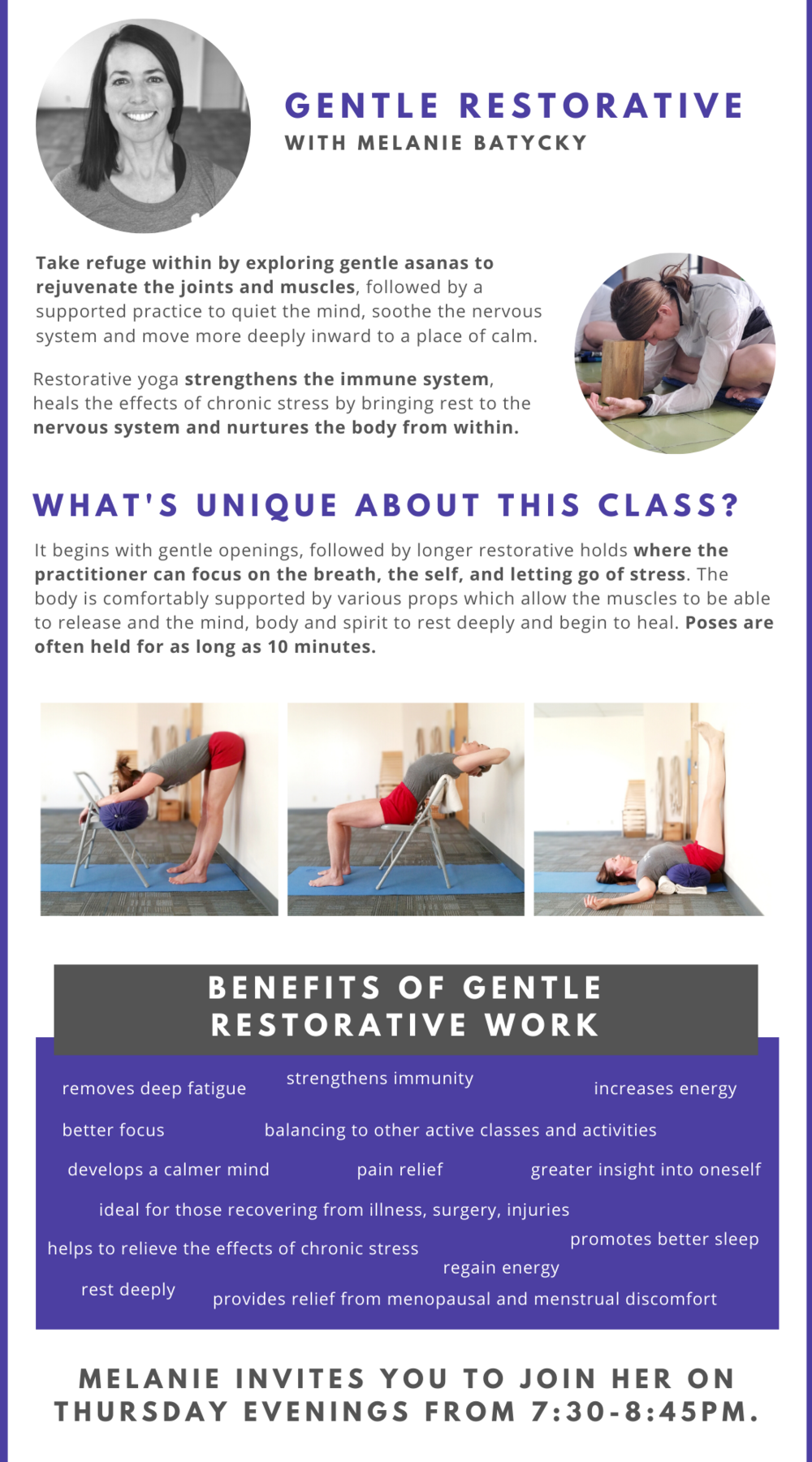
A yoga sequence's overall experience is the most important thing. The yoga poses in a sequence should embody these qualities, and each class should be designed to focus on specific aspects of the practice. When you are sequencing yoga poses, it is important to take into account the time of day, season and moon phase as well as current events. It is also important to keep your focus on your goals. Here are some tips for creating an effective yoga sequence: To get the most out of your classes, choose the best yoga poses to focus on.
First, determine when you want to teach the poses. For beginners, it is usually easier to start with a warm-up sequence of yoga. But more experienced yogis can use a yoga warming-up to avoid injury. Part 1 can be done by beginners. This involves sitting comfortably on either a chair or a block. Then, he or she can practice part two. Make the sequence more challenging by adding more advanced variations.
After you've chosen your peak poses, add some stretches and meditations to the sequence. These will improve the student's awareness of their bodies and give them a better understanding about peak poses. Consider the needs of your students when planning your sequence. You should choose asanas that you find easy to do if your classes are intended for beginners. You should practice the asanas slowly and carefully during your class.

When designing the sequence, consider the physical requirements of your students. By the third or forth class, your students should be capable of performing the most difficult poses. If the yoga class is structured correctly, the sequence should feel invigorating and comfortable. You should also remember that yoga is about the process, not the end result. The intention is to have fun with the practice and enjoy the journey. It should be enjoyable if you do this. You must be open with your body, breathe and the rest.
Before starting to teach yoga, you should understand the students' specific needs and abilities. A good yoga class will move students through poses with ease and make them feel comfortable. You will gain confidence as a teacher by learning the sequence. Your students should have the proper yoga experience. Beginners should avoid starting a class in a seated posture. A stretch should follow the posture. It is important to avoid the wrong type of postures.
When teaching a yoga class, it is important to remember that it's important for the teacher to be flexible. To teach the basics, a student who is new to yoga may require more time. Sometimes, it may be necessary to spend more effort in order to master the poses. Teaching a class is a great way to keep an eye on the students' abilities. Some students may require more time to adjust to new injuries.
It is important to teach yoga, as it will help students achieve their goals. It is crucial to know the right sequence of postures. It is very important that you understand the importance of the postures in a yoga class. Choose poses that will be most beneficial to your students. You should not neglect your students' needs. Respecting the needs of your students is crucial. If you can't effectively teach yoga classes, it won't be possible for you to teach good classes to your students.

It is essential to use a yoga sequence. It allows you the flexibility to add the poses to your classes. You don't need to go to a yoga class. You can do your practice in your own home. Create a playlist that is most comfortable for you. This is a great way not only to teach yoga classes but also to increase your confidence. This way, you'll feel confident about yourself and your ability to teach.
Creating a yoga sequence is a great way to give your students a great experience. If you create a sequence that works for you, your students can learn to follow it. With practice you can create an incredible class. Your students will feel more comfortable and happier when you are teaching them. This is your best teaching gift. This will ensure students have a pleasant experience.
FAQ
Is it true, that too much protein can cause kidney stones?
Protein helps maintain healthy bones and tissue. Consuming too much protein can result is calcium excretion via urine. In turn, this can result in kidney stones.
It is important to remember that not all people get kidney stones from eating more than 2g protein per kilogram (2.2lbs) of body weight. It is possible to eat high levels of protein without developing kidney stones.
You can prevent kidney stones by watching your sodium consumption. Sodium regulates the body's water balance. A high level of sodium can increase the risk of developing kidney stone.
If you have kidney stone, you might also consider reducing your protein intake. For most people, protein provides half their daily caloric requirements. It is possible to lose weight by cutting down on your intake of proteins.
If you do decide to eat more protein, don't go overboard. Try to eat less than 20% protein in total calories.
How can I lose weight by avoiding certain foods?
Avoid trans fats. Trans fats can raise LDL (the unhealthy) cholesterol levels while lowering HDL levels (the good).
Trans fats are commonly found in fast food, deep-fried and packaged baked goods as well snack cakes and other processed foods.
These unhealthy fats also cause inflammation, leading to heart disease and diabetes.
Avoid foods containing artificial sweeteners. Artificial sweeteners increase the risk of getting cancer.
These chemicals can be found in soft drinks, chewing gum, and candy bars. They can also be found in other foods like meat, poultry, and eggs.
Artificial sweeteners can be saccharin or cyclamate, sucralose, sorbitol or aspartame.
The American Heart Association suggests that you avoid these chemicals as they can cause DNA damage in your cells.
Is Cardio Better Than Strength Training?
Both are equally beneficial. Cardio is better if you are looking to build muscle faster.
Cardio burns a lot more calories per minute that strength training and is more effective at burning fat.
Strength training increases muscle mass but takes more time than cardio.
What is a good gym routine for you?
Regular exercise is key for staying in shape. It doesn't matter what type of fitness activity you choose as long as you do it regularly. Consistency and consistency are the keys to success. If you want to achieve results, you must stick at it for an extended period.
Start by doing small amounts of daily physical activity (like walking). Then gradually increase the time spent exercising until you spend 30 minutes a day working out. You could do this by running, swimming, weight training or yoga.
You should try to ensure that you exercise most days of the week. Don't skip any sessions unless you have a valid reason for not attending.
Make sure to wear appropriate clothing and footwear for outdoor exercise. You also need to consider the weather conditions and whether they affect your ability to exercise safely.
When you exercise, make sure you are drinking plenty of water. It is best to avoid alcohol while you're exercising. Also, avoid caffeinated drinks such as coffee, tea, and cola. They can provide energy, but they also dehydrate.
After your first exercise, you may feel tired. You'll feel more energetic and refreshed if you keep going with your exercise program.
Statistics
- According to the American Academy of Dermatology (AAD), men over 50 are at a heightened risk of developing it. (healthline.com)
- By John Thompson Take a whopping 38% off a set of PowerBlock Pros. (menshealth.com)
- Get free shipping and 25% off today. (healthline.com)
- Are You One of the 20% of Guys (mh.co.za)
- According to the American Heart Association, blood pressure should be checked at least once every two years, beginning at age 20. (my.clevelandclinic.org)
External Links
How To
How can I burn fat and exercise?
Exercise reduces calories by increasing metabolism, and oxygen consumption.
Moderate intensity exercise is a safe way to lose weight.
These tips can help you to burn fat while training:
-
Cardio exercises include walking, running, swimming, cycling, running and jogging.
-
Exercise for 30 minutes three times per week.
-
You can lose weight by adding strength training to the routine.
-
Avoid doing intense exercises. You can build muscle without breaking down muscle tissue.
-
When exercising, make sure to drink lots of water. Water flushes out toxins and helps keep the body hydrated.
-
After working out, drink low-fat protein shakes. Protein shakes repair muscles and increase energy.
-
So you don’t feel hungry, eat smaller meals throughout your day.
-
Don't skip breakfast! Skipping breakfast can leave you feeling tired and sluggish.
-
Take care of yourself mentally. Stressful situations can slow metabolism.
-
Keep a positive attitude. Studies show that people who believe they are overweight gain more weight then those who think they are attractive.
-
Get enough sleep. Insufficient sleep can make it more difficult to lose weight.
-
Stay active. Get up every hour and get moving.
-
Maintain a healthy diet. You will feel fuller longer if you eat right.
-
Find relaxation techniques. Your body won't release stress hormones that cause muscle tissue destruction if you have a tense mind.
A balanced diet will provide all nutrients that are necessary for growth.
You should eat six small meals per day rather than three large ones. This allows your body time to digest what you've eaten.
For strong bones, we need 500 mgs of calcium daily. Calcium can be found in dairy products such as yogurt, fortified soybean beverages, orange juice, cereals, bread, and cereals.
Calcium comes from leafy green vegetables, beans, tofu, nuts, seeds, and cheese.
Vitamin D is essential for calcium absorption. Vitamin D is found in eggs yolk, fatty fish and fortified foods.
Vitamin E is essential for skin health. It can be found as a vegetable oil, wheat germ, peanuts or almonds.
Zinc is essential for healthy immunity and wound healing. Zinc can be found as a mineral in oysters.
Zinc deficiency may cause fatigue, loss appetite, depression, and impaired immunity.
Insulin resistance is caused by eating too much sugar, which can increase blood glucose levels. Insulin resistance leads to weight gain.
When there is a high level of free radicals, insulin resistance can develop. Free radicals can be molecules with unpaired electrons that cause damage to cell membranes.
Free radicals come mainly from food additives, pesticides, herbicides, preservatives, smoking, air pollution, radiation, chemicals in cosmetics, lotions, and household cleaning supplies.
Free radical damage may lead to cancer, heart disease diabetes, arthritis, asthma and other conditions.
A well-balanced diet rich in antioxidants is the best way for you to avoid free radical damage. Antioxidants protect against oxidative damage.
Vitamin C is found in citrus fruits and beta carotene is found in carrots.
Selenium, copper as well as manganese and zinc are some other antioxidant nutrients.
Selenium helps protect cells from oxidative damage caused by free radicals. Selenium can also be found in Brazil nuts (tuna), liver, kidneys and shrimp.
Copper protects the brain, eyes, lungs, and red blood cells. Copper can be found in meat, shellfish, meat, and organ meats.
Manganese forms an essential part of bone structure. Manganese is found in brown rice, spinach, bananas, prunes, raisins, oatmeal, and lentils.
Zinc helps with normal growth, reproduction, as well as wound healing. Zn is present in lean cuts of meat and white fish, as well as eggs.